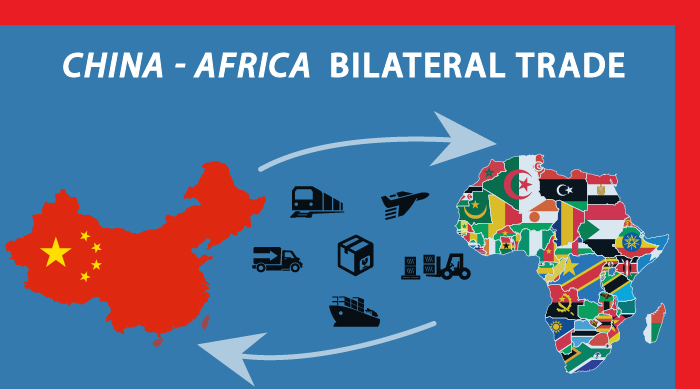Strained Ties: Analyzing The Breakdown In U.S.-China Relations

Table of Contents
Economic Competition and Trade Wars
The economic relationship between the U.S. and China has been a major source of friction for decades. A persistent trade deficit, coupled with concerns over unfair trade practices and intellectual property theft, has fueled escalating tensions. The resulting trade war, characterized by tit-for-tat tariffs, has significantly impacted global economic growth and reshaped the dynamics of Sino-American relations.
The Trade Deficit and Tariffs
The U.S. has long maintained a substantial trade deficit with China. This imbalance, fueled by a complex interplay of factors including differing labor costs and manufacturing capabilities, has been a persistent point of contention. The Trump administration responded with significant tariffs on Chinese goods, leading to retaliatory measures from China.
- Examples of specific tariffs: Tariffs were levied on a wide range of goods, including steel, aluminum, consumer electronics, and agricultural products.
- Impact on specific industries: The agricultural sector, particularly soybean farmers, suffered significantly from Chinese retaliatory tariffs. The technology sector faced challenges due to restrictions on the sale of certain components and technologies.
- Retaliatory measures: China responded with its own tariffs, targeting key U.S. exports and impacting various industries.
Technological Rivalry
Technological competition between the U.S. and China has become a central element of the strained relationship. Concerns about intellectual property theft, the development of 5G technology, and artificial intelligence (AI) dominance have led to increased restrictions and sanctions.
- Key technological areas of conflict: 5G network infrastructure, semiconductor manufacturing, artificial intelligence development, and quantum computing are key areas of intense competition.
- Examples of companies involved: Companies like Huawei, ZTE, and Qualcomm are at the center of this technological rivalry, facing scrutiny and restrictions from both governments.
- Implications for global tech development: This rivalry has implications for the pace and direction of global technological advancement, potentially creating a fragmented technological landscape.
Investment Restrictions and Sanctions
Both countries have imposed increasing restrictions on foreign investment, using sanctions as tools to exert geopolitical leverage. These measures further complicate the economic relationship and limit opportunities for cooperation.
- Examples of specific investment restrictions: Restrictions on Chinese investment in sensitive U.S. technologies and infrastructure, and vice-versa.
- Types of sanctions imposed: Sanctions range from financial restrictions to export controls on dual-use technologies.
- Their impact on economic growth: These restrictions have dampened economic growth and investment in both countries, increasing uncertainty and hindering innovation.
Geopolitical Tensions and Ideological Differences
Beyond economic concerns, geopolitical tensions and fundamental ideological differences have significantly contributed to the deterioration of US-China relations.
South China Sea Disputes
Territorial disputes in the South China Sea, involving competing claims to islands and maritime resources, have heightened tensions and fueled military posturing.
- Key islands claimed: The Spratly Islands and Paracel Islands are key areas of contention, with multiple nations asserting sovereignty.
- Military actions and posturing: Both the U.S. and China have conducted military exercises in the region, increasing the risk of miscalculation and escalation.
- International legal ramifications: The disputes have raised questions about international law, particularly the United Nations Convention on the Law of the Sea (UNCLOS).
Taiwan's Status and Cross-Strait Relations
The issue of Taiwan remains a highly sensitive and potentially volatile point of contention. China considers Taiwan a breakaway province, while the U.S. maintains a policy of "strategic ambiguity" regarding its defense.
- China's stance on Taiwan: China has repeatedly asserted its claim to Taiwan, and the possibility of military intervention remains a significant concern.
- US support for Taiwan: The U.S. provides Taiwan with defensive weaponry and maintains informal diplomatic ties, a position that angers China.
- Potential consequences of military escalation: A conflict over Taiwan could have catastrophic global consequences, potentially triggering a wider regional and even global conflict.
Human Rights and Ideological Conflicts
Differing political systems and human rights records are a major source of friction between the U.S. and China. Criticisms of China's human rights practices, particularly in Xinjiang and Hong Kong, have strained diplomatic relations.
- Specific human rights concerns: Concerns over human rights abuses in Xinjiang, including allegations of forced labor and cultural repression, and restrictions on freedoms in Hong Kong have drawn significant international condemnation.
- Impact on diplomatic dialogue and international organizations: These human rights concerns have hampered diplomatic dialogue and created divisions within international organizations.
The Role of Global Power Dynamics
The strained U.S.-China relationship is also deeply intertwined with broader global power dynamics.
Competition for Global Influence
Both the U.S. and China are vying for global influence, competing for alliances and partnerships in international organizations and across the globe.
- Examples of competition in international forums: Competition for leadership roles in the World Health Organization (WHO) and the United Nations (UN) exemplifies this struggle for global influence.
- Efforts to build alliances and partnerships: Both countries are actively engaging in diplomatic efforts to secure alliances and partnerships, often creating a zero-sum game dynamic.
Shifting Alliances and Partnerships
The strained U.S.-China relationship is forcing other countries to choose sides or navigate a complex path of neutrality.
- Examples of countries caught in the middle: Many countries in Southeast Asia and elsewhere find themselves pressured to choose between the U.S. and China.
- Shifting geopolitical alignments: The rivalry is reshaping global alliances and partnerships, leading to a more multipolar world order.
Conclusion
The deterioration of U.S.-China relations is a multifaceted challenge driven by a complex interplay of economic competition, geopolitical tensions, and ideological differences. The trade war, technological rivalry, disputes in the South China Sea, and differing stances on human rights have all contributed to a deeply strained relationship. Looking ahead, the trajectory of Sino-American relations remains uncertain. The possibility of increased cooperation exists alongside the risk of further escalation. Understanding the complexities of U.S.-China relations is crucial for navigating the future of global politics. Continue exploring this critical relationship to form your own informed opinion on the future of Sino-American relations, and the implications for the global landscape.

Featured Posts
-
 Pan Nordic Defense A Deep Dive Into Swedish Armor And Finnish Personnel
Apr 22, 2025
Pan Nordic Defense A Deep Dive Into Swedish Armor And Finnish Personnel
Apr 22, 2025 -
 The Papal Conclave A Test Of Pope Franciss Reform Efforts
Apr 22, 2025
The Papal Conclave A Test Of Pope Franciss Reform Efforts
Apr 22, 2025 -
 The Looming Threat Of Googles Breakup Examining The Antitrust Concerns
Apr 22, 2025
The Looming Threat Of Googles Breakup Examining The Antitrust Concerns
Apr 22, 2025 -
 Open Ai Facing Ftc Investigation Data Privacy And Ai Concerns
Apr 22, 2025
Open Ai Facing Ftc Investigation Data Privacy And Ai Concerns
Apr 22, 2025 -
 The Future Of Family Planning Otc Birth Control In A Post Roe World
Apr 22, 2025
The Future Of Family Planning Otc Birth Control In A Post Roe World
Apr 22, 2025
